Quick Summary:
Can quartz countertop be repaired?
Table of Contents
Toggle- Can quartz countertop be repaired?
- What is engineered quartz — a brief primer
- Common types of quartz damage
- Can a chip or crack in a quartz countertop be repaired? (short answer)
- How quartz repairs are done — materials & step-by-step (what pros use)
- DIY vs professional repair — what to choose
- Cost: repair vs replacement (data-backed)
- When replacement is necessary
- Industry & regulatory trends affecting repair and fabrication
- How to choose a repair service, fabricator, or manufacturer/factory
- FAQ — Google hot-search style (5 Q&A)
Most surface chips, small cracks, and edge damage to engineered quartz can be repaired using color-matched epoxies, resin fillers, or professional stone repair services; deep structural breaks or extensive heat damage usually require slab replacement. Typical professional repair is faster and cheaper than full replacement, but replacement costs for a full kitchen vary widely (commonly $1,500–$8,000 depending on slab grade and labor). Recent global regulatory shifts (notably bans and stricter controls on high-silica engineered stone in some jurisdictions) are accelerating safer fabrication practices and influencing where and how repair/replacement work is performed.
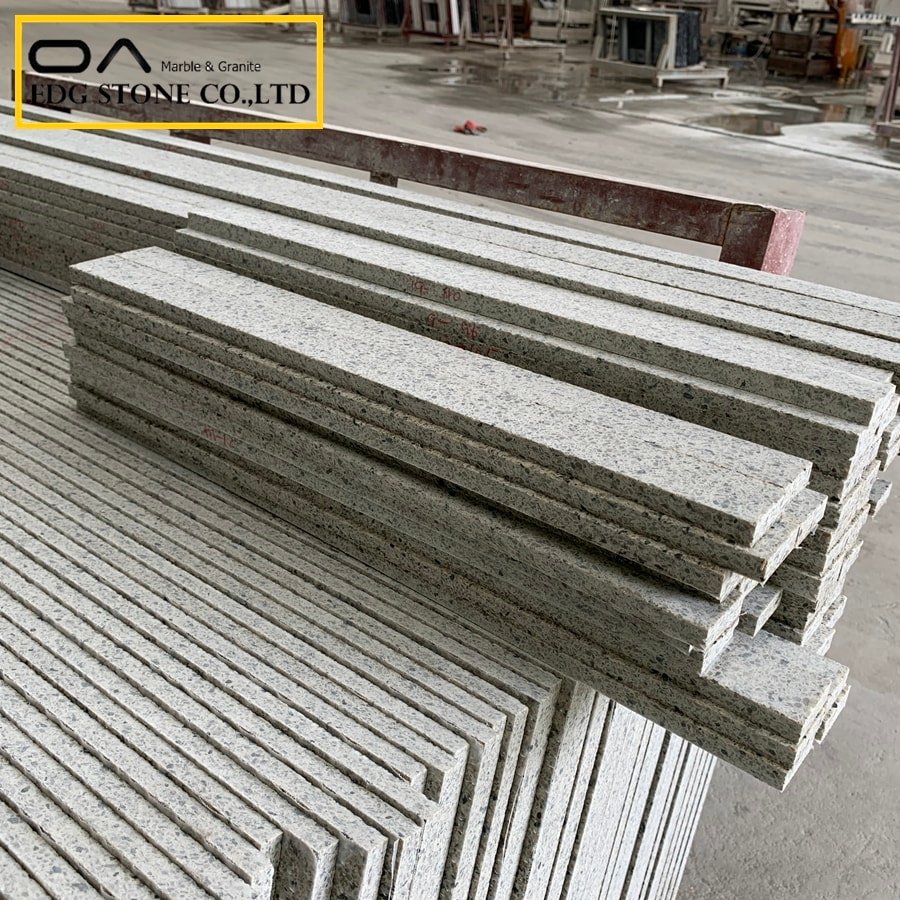
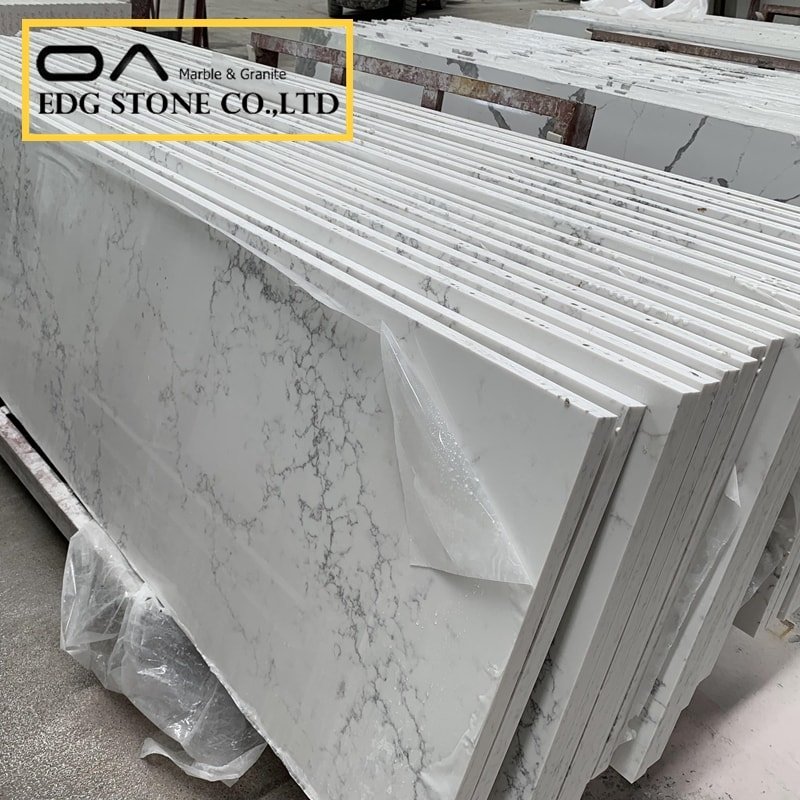
What is engineered quartz — a brief primer
Engineered quartz countertops (often just called “quartz”) are manufactured slabs typically made of ~90% ground natural quartz and ~10% polymer resin, and pigments. That resin makes them non-porous and stain-resistant compared to many natural stones, but also gives them different repair and heat behavior than granite or marble. Because quartz is a composite, repairs rely on compatible resins and color-matching techniques rather than stone re-polishing alone.
Common types of quartz damage
Surface chips (usually caused by impacts from heavy or sharp objects)
Edge chips (bumping the counter corner or appliance bumps)
Hairline or surface cracks (stress, manufacturing flaws, or dropped weight)
Deep structural breaks (rare — slab fractured across seams or anchor points)
Heat damage/discoloration (hot pots can scorch or yellow resin)
Stains/resin discoloration (rare but possible with solvents, permanent dyes)
Each damage type has different repairability and cost implications.
Can a chip or crack in a quartz countertop be repaired? (short answer)
Yes — most chips, hairline cracks, and edge chips in engineered quartz can be repaired to a cosmetically acceptable (and often nearly invisible) finish using epoxy/resin fillers, color-matching pigments, and skilled surface finishing. However, deep structural fractures, widespread delamination, or severe heat damage that has altered the resin’s chemistry may require slab replacement. Professional repair is usually recommended for the best cosmetic blending.
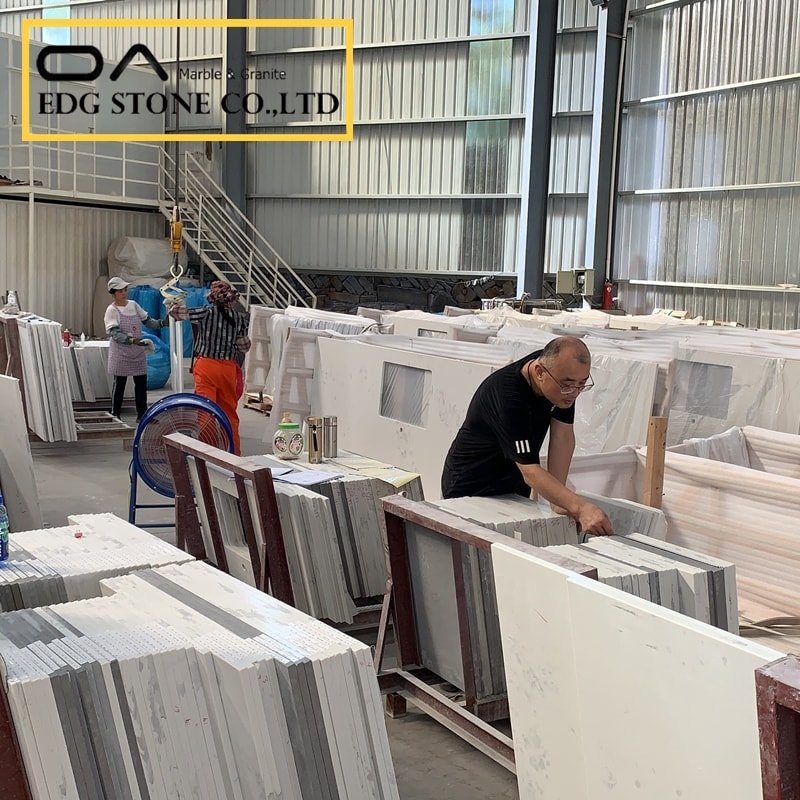
How quartz repairs are done — materials & step-by-step (what pros use)
Materials & tools commonly used
Two-part clear or color-tinted stone epoxy or polyester resin
Pigments or dye powders for color-matching
Fine sandpaper / abrasive pads and polishing compounds
Micro-saws or grinders for structural resetting (rare)
Clamps & low-profile caulking tools for seams
Safety PPE (gloves, goggles) and ventilation
Typical repair workflow (professional)
Assess the damage: photo + tactile check to determine depth and risk.
Clean area thoroughly (remove grease, old sealant, debris).
Color-match epoxy: mix resin with pigments to mimic the quartz pattern (this is the skill-intensive part).
Fill the chip/crack with epoxy or resin; for cracks the epoxy is worked into the seam and allowed to cure.
Sand & finish: progressively finer abrasives are used to get the surface flush and then polished to match the heen.
Seal (if needed) and final inspection.
For hairline cracks, professionals often use clear resin so the repair is less visible. Edge chips are rebuilt with formed epoxy and then shaped/polished.
DIY repair kits exist (fillers, small epoxy tubes, touch-up pigments) and can be effective for small chips, but matching large patterns or glossy finishes is hard without professional equipment.
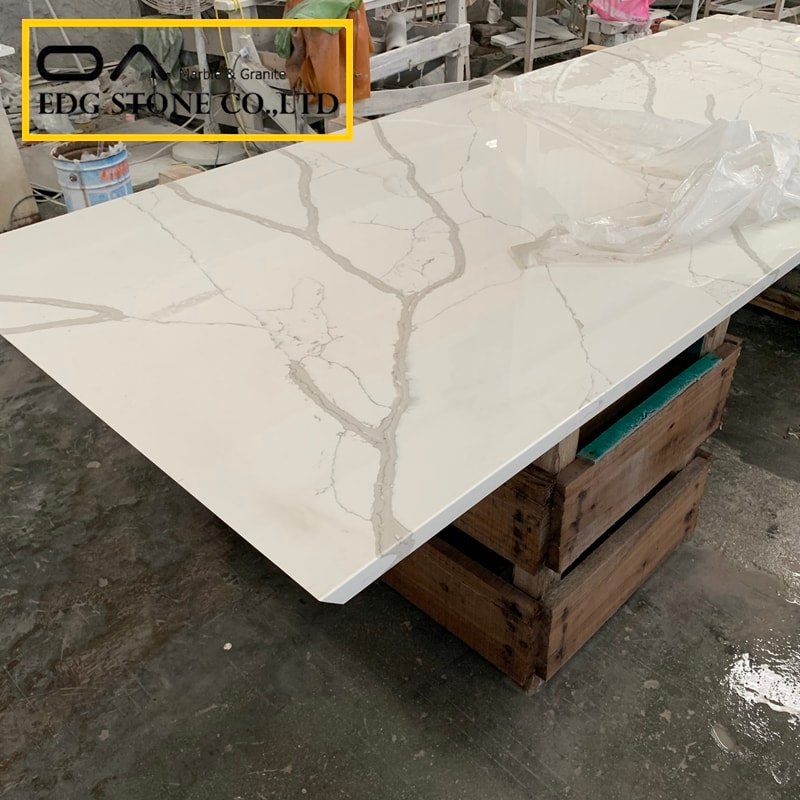
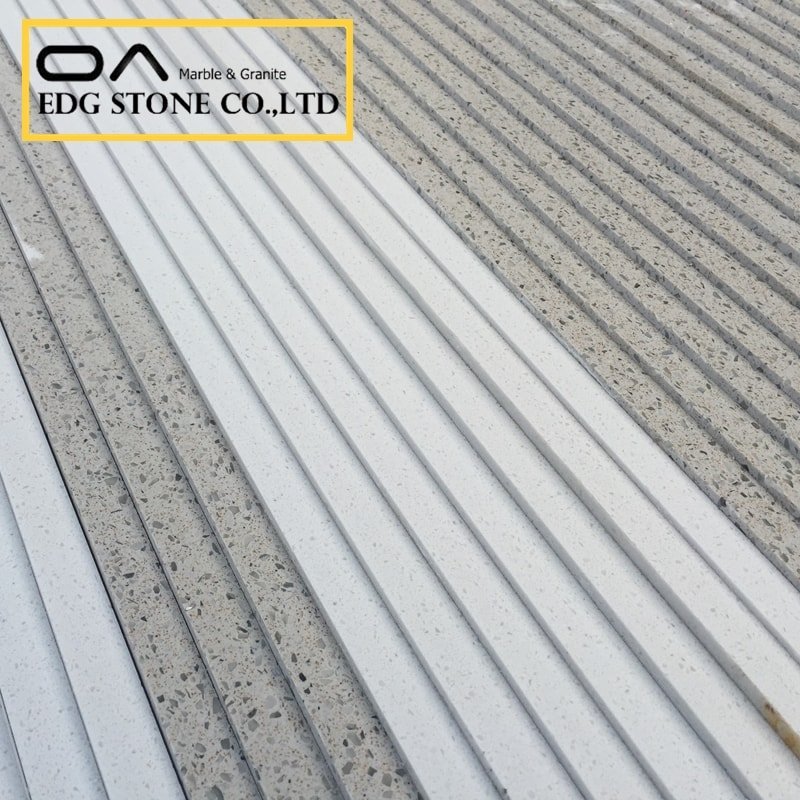
DIY vs professional repair — what to choose
DIY repair
Best for: small surface chips (< 1/2 inch), tiny edge nicks, temporary fixes.
Pros: lower cost, immediate.
Cons: color mismatch risk, sheen mismatch, possible visible seam.
Professional repair
Best for: visible edges, patterned surfaces (veining), hairline cracks, or any structural risk.
Pros: near-invisible finish, warranty in many shops, safer for structural fixes.
Cons: higher cost than DIY, but far cheaper than full replacement.
Tip: If the damage is on an exposed edge or near sinks/stoves where moisture or heat is present, lean to pro repair.
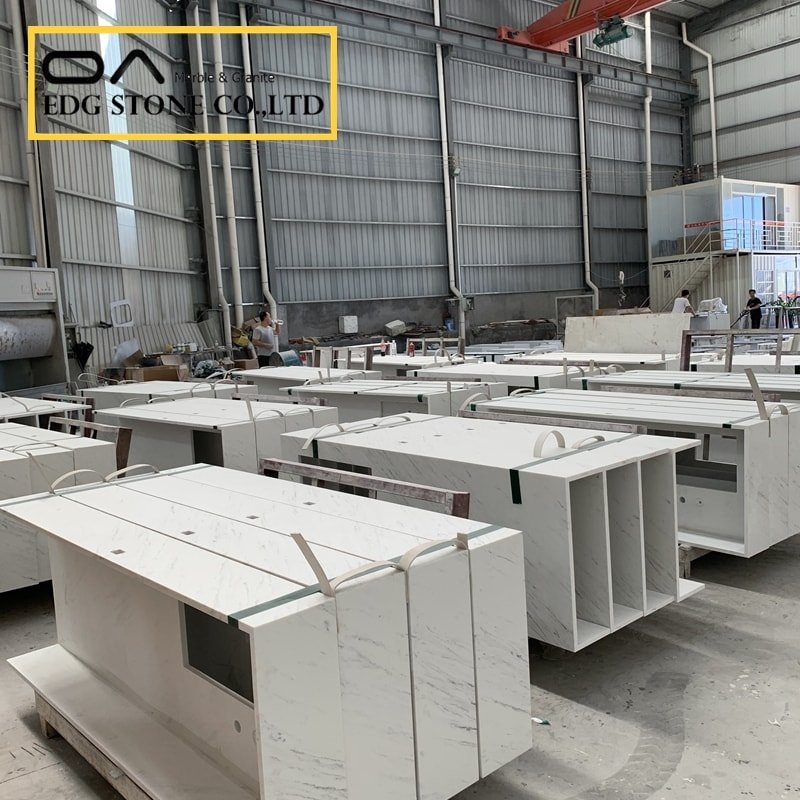
Cost: repair vs replacement (data-backed)
Repair costs (ballpark)
Small DIY kit: $10–$40.
Professional chip repair: typically $75–$250 depending on size, location, and finish.
Larger hairline/crack repairs or matched pattern repairs: $200–$800+.
(Exact quotes vary; always request a site visit.)
Replacement costs (for whole countertops)
Per-square-foot installed (2024–2025 ranges): $120–$157/sq ft (data from industry cost indexes); averages for a full kitchen project frequently land between $1,500 and $8,000, with common quoted averages near $3,000–$4,500 depending on slab grade, location, and fabrication complexity. If the repair cost approaches ~30–50% of replacement cost, many homeowners choose replacement.
Which is cheaper? For most localized damage, repair is far less expensive than replacement; replacing the full slab is only economical when damage is widespread, structural, or when homeowners are doing a full remodel.
When replacement is necessary
Slab fractured across a seam or bowed — structural failure.
Multiple repairs required across many areas — cumulative cost vs replacement.
Severe heat damage (resin scorched/yellowed) that alters color permanently.
If matching an existing pattern is impossible (e.g., the manufacturer discontinued the color and the visual mismatch is unacceptable).
If the owner is remodeling and wants new edge profiles or a different slab, then replacement makes sense.
Industry & regulatory trends affecting repair and fabrication
Regulation and worker-safety actions in multiple countries over the recent years are reshaping the engineered-stone industry — and that has knock-on effects for repair, fabrication, and where work is safe and permitted.
Key regulatory / industry signals:
Australia moved to ban the use, supply, and manufacture of engineered stone (high silica content) — national decision effective 1 July 2024. This landmark action is accelerating tighter controls and even bans in other jurisdictions and is reshaping supply chains and fabrication practices.
OSHA and national agencies continue to emphasize control of respirable crystalline silica (silicosis risk) with standards, inspection initiatives, and enforcement actions in the U.S. construction and manufacturing sectors. OSHA has published standards and inspection initiatives focused on engineered stone fabrication and identified numerous overexposures during targeted inspections.
State actions (for example , California’s emergency-to-permanent rules) and international guidance (NIOSH/CDC) stress safer fabrication methods, wet cutting, ventilation, and substitution where feasible.
Why this matters for repair & replacement
Fabrication and repair shops must meet stricter worker-protection rules — this raises compliance costs and shifts some work toward certified facilities.
Some jurisdictions may restrict the installation or manufacture of certain engineered stone products; a homeowner may find replacement slab choices narrower in regulated markets.
For homeowners: choose repair/fabrication partners who can document proper worker safety and compliance — it’s now a sign of reputable shops.
How to choose a repair service, fabricator, or manufacturer/factory
Ask about compliance & safety: Does the shop follow local silica controls (wet cutting, LEV, respiratory protection)? Can they show training/inspections? 疾病控制與預防中心+1
Request before/after photos and references for similar patterns & edges.
Get a site visit & written quote (include warranty terms).
If replacement is needed, compare slab options from certified suppliers; ask the manufacturer/factory for slab origin, warranty, and whether they offer cut-to-size to reduce seam count.
For commercial bulk buys (manufacturer / factory / wholesale intent): verify production compliance, lead times, and whether they offer matched remnants or repair kits for after-sales service.
FAQ — Google hot-search style (5 Q&A)
Below are common search queries plus concise answers. These exact Q&A strings are repeated verbatim in the JSON-LD after this section.
Q1: Can a chip in a quartz countertop be repaired?
A1: Yes. Small chips can usually be repaired using a color-matched two-part epoxy or resin filler, then sanded and polished to blend with the surrounding surface. Large or complex pattern chips are best handled by a professional fabricator for the most seamless result.
Q2: Can a crack in a quartz countertop be repaired?
A2: Often yes. Hairline and non-structural cracks can be injected and stabilized with epoxy resin; the crack is filled, cured, and finished. If a crack is deep, runs under anchors, or indicates structural failure, replacement may be needed.
Q3: Can a chip on the edge of a quartz countertop be repaired?
A3: Yes. Edge chips are commonly rebuilt with epoxy and shaped to recreate the original profile, then sanded and polished to match the finish. For ornate edge profiles, professional repair produces the best visual match.
Q4: Can quartz countertops be refinished?
A4: Quartz does not refinish in the same way as natural stone; you can polish and restore surface sheen and perform repairs, but you cannot “re-hone” quartz to change the material. Repairs and professional polishing can restore the appearance, but won’t replace the missing pattern from a damaged slab.
Q5: How much does it cost to replace quartz countertops?
A5: Replacement cost varies widely by region and slab grade. Typical installed cost ranges from about $120–$157 per square foot (2024–2025 data), and overall kitchen projects commonly range from roughly $1,500 to $8,000, with many homeowner projects near $3,000–$4,500. Get multiple quotes for accurate budgeting.
50 SEO tags (short & targeted)
can quartz countertop be repaired, quartz countertop repair, repair quartz countertop chip, repair quartz countertop crack, quartz edge repair, quartz refinishing, quartz repair cost, replace quartz countertops cost, quartz countertop replacement, quartz countertop repair kit, quartz countertop repair near me, quartz repair professional, engineered quartz repair, quartz scratch repair, quartz countertop maintenance, quartz countertop restoration, quartz countertop manufacturer, quartz countertop factory, wholesale quartz countertop, buy quartz slabs, quartz slab replacement, quartz countertop warranty, quartz countertop heat damage, quartz countertop discoloration, quartz countertop chip fix, quartz countertop epoxy, quartz countertop crack fix, how to repair quartz countertop, can quartz be repaired, can quartz countertops be refinished, quartz countertop repair service, kitchen countertop repair quartz, quartz counter repair cost, quartz countertop replacement cost 2025, engineered stone regulation, silica engineered stone ban, silicosis engineered stone, OSHA silica engineered stone, SafeWork Australia engineered stone, NIOSH silica guidance, quartz countertop DIY repair, quartz countertop professional repair, best quartz repair kit, color match quartz epoxy, quartz countertop polishing, quartz countertop seaming, quartz countertop remnant, quartz slab price, quartz countertop installation cost, quartz countertops 2025.
